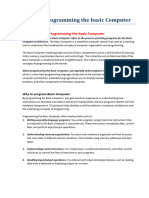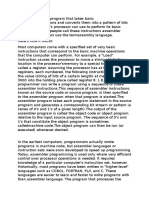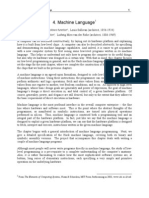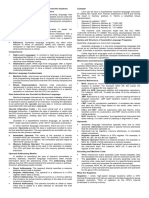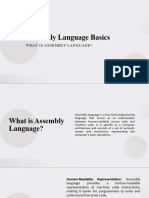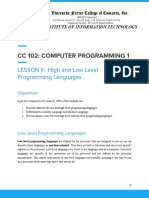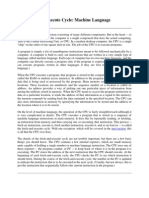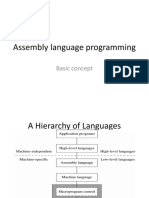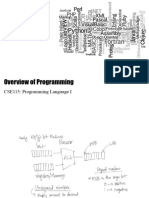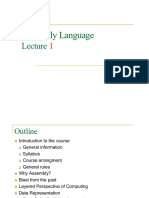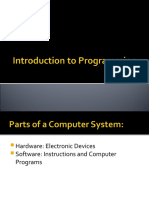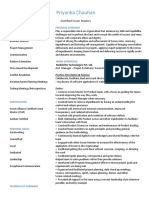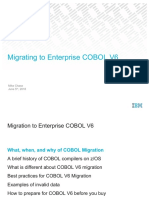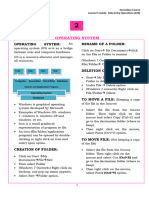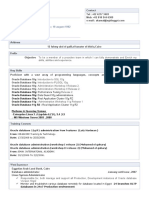Programming the Basic Computer: Introduction
The basic computer is a conceptual model used in computer architecture to illustrate the
fundamental principles of how computers operate. It comprises core components such as
the arithmetic logic unit (ALU), control unit, memory, and input/output interfaces. This
simplified system helps students understand how programs are executed at the hardware
level.
At the heart of the basic computer is the instruction cycle, which includes the fetch, decode,
execute, and write-back phases. During the fetch phase, the control unit retrieves the next
instruction from memory. The decode phase interprets the instruction, identifying the
operation and the data it needs. In the execute phase, the ALU or another part of the CPU
performs the required action, such as addition or memory access. The results are then
written back to registers or memory.
The instruction set of a basic computer typically includes data transfer (LOAD, STORE),
arithmetic operations (ADD, SUB), logical operations (AND, OR), and control instructions
(JMP, CALL, RET). Programming the basic computer involves using these instructions to
perform desired tasks.
Understanding this model provides insights into key topics like memory addressing,
instruction formats, control signals, and CPU design. It lays the foundation for learning
advanced concepts such as pipelining, parallel processing, and modern processor
architectures.
Learning how to program the basic computer helps students appreciate how high-level code
is translated into low-level instructions that the CPU can execute. It also promotes an
understanding of system constraints such as memory limits, instruction timing, and
execution sequencing. These skills are vital for careers in embedded systems, operating
system development, and hardware design.
Overall, programming the basic computer introduces the principles that drive all modern
computing systems and serves as a cornerstone for understanding computer organization
and architecture.
Machine Language
Machine language, or machine code, is the most fundamental programming language that a
computer can understand and execute directly. It consists entirely of binary digits (0s and
1s), with each instruction representing a specific operation for the computer’s CPU. These
�instructions are processed at the hardware level, without the need for translation or
interpretation.
Each machine language instruction typically consists of an opcode (operation code) and one
or more operands. The opcode specifies the action to be performed (e.g., ADD, SUB, LOAD,
STORE), while the operands indicate the memory locations or registers involved in the
operation. For example, a binary instruction like 0001 0100 0010 might instruct the CPU to
add the contents of register 4 and register 2.
Machine language is architecture-specific, meaning a program written for one CPU type
(e.g., Intel x86) will not work on another (e.g., ARM) without modification. This lack of
portability is a major limitation, but the advantage is maximum efficiency and speed.
Programs written in machine code execute faster than those written in high-level languages,
as there is no need for interpretation or compilation at runtime.
Because it is difficult for humans to read and write machine code, it is rarely used directly in
programming. However, it is crucial for understanding how software interfaces with
hardware. Debuggers, compilers, and interpreters all generate machine code as part of the
execution process.
Understanding machine language is essential for low-level programming, such as
developing firmware, bootloaders, or device drivers. It is also foundational for
cybersecurity professionals who analyze malware or reverse-engineer software.
In summary, machine language is the purest form of code that directly controls computer
hardware. Though not commonly written by programmers today, it remains an essential
concept in computer science education and system-level programming.
Assembly Language
Assembly language is a symbolic programming language that provides a more readable
representation of machine language. It uses mnemonics such as MOV, ADD, SUB, and JMP to
represent low-level instructions, which are then translated into binary code by an
assembler. Each assembly instruction corresponds closely to a machine language
instruction, making it easier to understand and manage.
Assembly language allows programmers to write programs that interact directly with the
hardware. It provides control over the CPU, memory, and peripheral devices. Unlike high-
level languages, which abstract away hardware details, assembly programming requires an
understanding of the processor’s architecture, including its instruction set, registers, and
memory model.
�A typical assembly program includes data declarations, instructions for arithmetic and
logical operations, and control flow directives like loops and conditional branches. For
example, to add two numbers and store the result, one might write:
```
MOV AX, 5
MOV BX, 10
ADD AX, BX
```
This sequence loads values into registers AX and BX and then adds them.
Each CPU architecture has its own assembly language syntax. For example, Intel and ARM
processors use different sets of instructions and conventions. As a result, assembly code is
not portable across different platforms.
Despite its complexity, assembly language is still used today in scenarios where
performance and hardware control are critical. Examples include embedded systems,
operating system kernels, and real-time applications. It is also used in reverse engineering,
malware analysis, and cybersecurity research.
Learning assembly language helps programmers understand how high-level constructs are
implemented at the hardware level. It builds skills in debugging, optimization, and
performance tuning. Overall, assembly language provides a bridge between hardware and
software, making it an essential topic in computer science.
